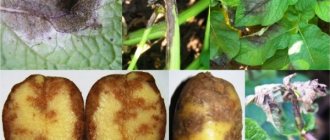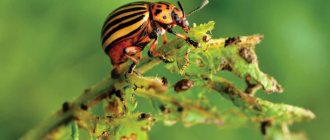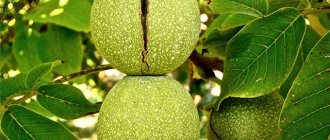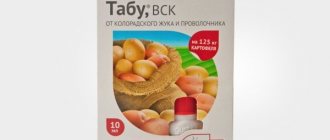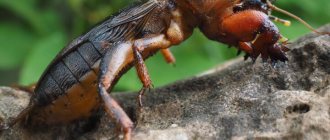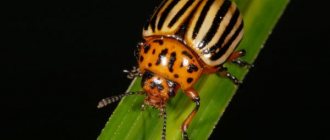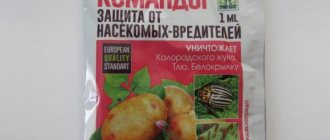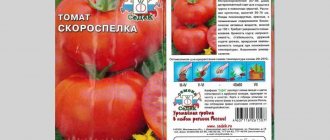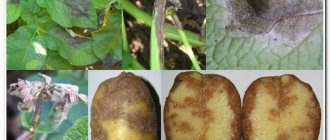Potatoes were originally a wild crop. This is a perennial from the nightshade family, native to South America. It was there that people first discovered the tubers and began to use them for food. This happened about two and a half thousand years ago. And today, breeders from all countries are working tirelessly to develop new varieties with maximum positive characteristics.
Gardeners grow potatoes as an annual plant. They plant the tubers in the ground in early spring, cultivate the crops throughout the summer, and harvest in the fall. In fact, each potato is a hypertrophied shoot of the rhizome, accumulating a large amount of vitamins, nutrients and other components. It is thanks to this, as well as its excellent taste, that potatoes quickly took root in our country and entered the daily diet of many people.
Based on the content of starch, proteins, vitamins, macro- and microelements, sugars, amino acids and other substances in the pulp, this crop is divided into 4 main groups:
- table potatoes;
- fodder potatoes for livestock;
- technical potatoes;
- universal varieties.
Table potatoes are in demand all over the world; they form the basis of the diet. The tubers of most of these varieties reach medium sizes, and some grow very large. They have a round, regular shape, a thin peel with a smooth surface. The eyes on table potato tubers are few and small. The starch content in such potatoes is quite high, in the range of 12-18%. It is important that specimens used for human food have high taste and attractive presentation. Such popular table varieties as:
- Red Scarlett;
- Felox;
- Nevsky;
- Impala:
- Riviera;
- Sineglazka;
- Lapot.
Forage potato varieties are rich in protein, dry matter and starch. They go to feed pets. Their main distinguishing feature is considered to be high productivity, allowing the maximum number of tubers to be grown in a small area.
The following varieties are classified as fodder:
- Lorch;
- Korenevsky;
- Woltman.
Industrial potatoes are grown as raw materials for the production of starch and alcohol. Its pulp must contain at least 16% starch. But there is very little protein in tubers of technical varieties. And such potatoes do not darken when cut and peeled.
The best representatives of this category are:
- Outflow;
- Climber;
- Accent.
Universal varieties are designed for any use. They are suitable for human and animal nutrition and are used for technical purposes.
Among the universal varieties we can distinguish the following:
- Arosa;
- Berlichingen;
- Sante;
- Lasunok.
Feed potatoes - what are they and what are they for?
Fodder potatoes were specifically created for use in agriculture. In many countries, including Russia, it is used as the main and additional food for domestic animals. Feed varieties contain an increased amount of proteins, which have a positive effect on the body of animals and significantly increase their productivity.
Description of appearance and characteristics of tubers
Forage potatoes grow large in size, have the shape of an irregular oval or circle with swelling and protrusions in different places. The eyes are deep-set. The consistency of the pulp is watery, the taste is mild.
Fodder potato variety is planted specifically for animals
For your information! During the cooking process, these potatoes become very soft.
Differences between fodder potatoes and table potatoes
Understanding what feed potatoes are and finding the difference between fodder and table vegetables is very difficult at first glance. But experienced potato growers say that it is still possible to distinguish the vegetable, and advise paying attention to the following points:
- size. Table potatoes come in medium or large sizes. Tubers of forage varieties are large in size;
- appearance. Table varieties have excellent tuber appearance, regular oval shape, thin skin. Forage varieties have a not very attractive appearance, irregular shape, thick skin and rather deep-set eyes;
- taste. Table potato varieties have remarkable taste. Their use in cooking is universal. Feed potatoes have a mild taste and a watery pulp structure.
It is also worth paying attention to the fact that fodder potatoes have white flesh that contains a lot of starch, and which becomes very crumbly during cooking.
Note! Forage potato varieties are stored very well until spring, they do not sprout or rot.
Food use
Chickpeas are a valuable food product. This is due to the favorable combination of proteins, fats and carbohydrates, macro- and microelements, vitamins and biologically active substances in the grain. Young leaves and stems contain large quantities of malic and oxalic acids. Given the wide range of useful substances and high nutritional value, it was widely used as food in those countries where it is most common: India, Pakistan, Uzbekistan, Turkey, Spain and many others. Many different dishes are prepared from it. Chickpea grains are used for food in their green and ripe state; the leaves and young shoots serve as seasoning. Chickpeas are widely used as food by the peoples of Central Asia and Transcaucasia, where national dishes are prepared from it - soups, salads, and added to pilaf.
In Russia, chickpeas have not yet found wide use as a food product, but the possibility of using them in the manufacture of confectionery, bakery, dairy and sausage products has been proven.
The Volgograd Research Institute of Meat and Dairy Cattle Breeding and Processing of Livestock Products is doing a lot of work in this direction. Due to the fact that chickpea grain is rich in selenium, regulatory and technical documentation has been developed for the food product - chickpea milk, which has a therapeutic and prophylactic effect.
Varieties of feed potatoes for livestock
Fodder potato varieties are intended for feeding domestic cattle, as well as for medium and small domestic animals.
Berlichingen
Refers to early high-yielding fodder varieties. The tubers are large, oblong-oval in shape. The peel is bright red, thick and rough to the touch. The pulp is white and does not change color during cooking. The taste is weak. The amount of starch in the pulp is about 17%.
The Berlichingen variety has an oblong shape
Zazersky
Table and fodder variety. The taste is satisfactory. The tubers are round in shape and light yellow in color. The eyes are set deep. The skin of the tubers is smooth. The pulp is pale yellow.
Important! This variety is highly resistant to late blight, potato cancer, and scab.
The Zazersky variety is resistant to many ailments
Voltman
Late high-yielding variety of fodder potatoes with beige-brown skin. The pulp is white. The tubers have an irregular angular shape. The variety does not require any special attention in care.
The Voltman variety has a beige skin
Vita
Table and fodder variety. Product indicators are high, taste is good. The tubers are large and round in shape. The white peel is smooth to the touch; with a lack of moisture, it becomes mesh-like. The flesh is white and darkens slightly when cut. The variety has good immunity to potato cancer. Resistance to late blight, blackleg and scab is low.
Application of root vegetables
Root crops are used in livestock farming as feed for livestock.
For whom can it be used as food?
Potatoes are fed to pigs, sheep, and horses. For rabbits and poultry, vegetables are digested.
Potato. (Photo used under standard license ©ogorodnye-shpargalki.ru)
Advantages and disadvantages of fodder potatoes
Fodder potatoes have the following advantages:
- content of a large amount of digestible proteins, about 3%;
- high content of starch, which is perfectly digestible by cattle, as well as medium and small domestic animals;
- compared to other crops grown for livestock feed, it contains an increased amount of nutritional components;
- characterized by high yields.
In addition to the advantages, fodder potatoes also have disadvantages:
- tubers, tops, leaves and flowers contain an increased amount of solanine, which gives milk a bitter taste;
- during long-term storage in tubers, the amount of useful components that are so important for animals decreases;
- With silage technology, which is used to keep tubers longer, the acidity in the fruit increases.
How to distinguish forage crops from table crops
Potatoes are a popular product that is used not only in livestock farming. Almost every person knows what it is, because we so often cook potatoes for ourselves in our daily diet. Among the variety of varieties, not all of them are suitable for humans, just as not all are used for preparing animal feed. A significant question that often worries owners of their own farms is how to distinguish fodder potatoes and what to choose.
What is the difference between high-quality fodder potatoes?
- Starchiness. People use higher quality varieties of potatoes, in which the starch content does not exceed 12-18%. For animals, tubers that are much richer in protein and starch are used.
- Appearance. Visually, potatoes can be different: the color of the skin can be from light brown to deep burgundy, the inside of the fruit is usually yellow-white in any variety.
- Taste and size. The main noticeable difference between forage crops is that they have larger, less rich tubers that sometimes even taste bland. However, most fodder varieties can be eaten by humans.
Planting and growing
Potatoes for animals are grown in the same way as regular varieties of table potatoes.
Preparing for landing
For planting, it is better to take medium-sized tubers. It is very important that there is no visible damage or rot on them. Before planting, the tubers must be germinated (about 20-30 days) in a warm (20-22 °C) room. It is very important to treat the planting material with a growth stimulator; this will accelerate germination and further maturation.
Note! To prevent fungal diseases, tubers are treated with copper sulfate, preparing a solution at the rate of 50 g per bucket of water.
It is better to germinate tubers indoors in a warm room.
Soil requirements
Fodder potatoes are grown on fertile, turf, chernozem, medium sand, light loamy soil, which has weak or neutral acidity. In the fall, the site is dug up to a depth of a spade and fertilizer is applied. It is recommended to add organic matter and mineral complexes. In the spring, a month before planting, the soil must be fertilized with mullein. It is laid out on the surface of the soil and covered with a layer of earth. 3-5 days before planting the tubers, the soil needs to be dug well to a depth of 20-30 cm.
Important! Potatoes should not be planted in wetlands or where there is excess moisture. In such soil it will begin to rot.
Dates, scheme and rules of planting
Tubers with hatched sprouts are planted in open ground when the soil warms up to 8-10 ° C to a depth of 10-12 cm. As a rule, this happens in early - mid-May.
For forage potato varieties, the technology of planting in ridges is used:
- Furrows are drawn in the soil to a depth of no more than 10 cm and at a distance of at least 60 cm from each other.
- Tubers are placed in the furrows at intervals of about 35-40 cm.
- The furrows are covered with soil and ridges up to 15-20 cm high are placed on top of them.
- As the tops grow, soil is added to the ridge from time to time so that its height is at least 30 cm.
Ridge method of planting tubers
Forbs
This group includes greens, which belong to other families defined by botany. This is the most numerous group, constituting 60–70% of the grass stand in various pastures and meadows. They are often of great economic importance. This is especially true for the types of wormwood and solyanka.
This group is considered nutritious (exceeds cereals). However, it is poorly eaten by animals, due to the following factors:
- pubescence;
- prickliness;
- unpleasant, often bitter, taste.
Annual and perennial plants for farm animals from these families are considered a desirable admixture if they grow within 15–20% of the total vegetation. Herbs help improve palatability and diversify the mineral composition.
There should not be a lot of forbs in the hayfield. This is due to the fact that they crowd out more valuable cereals and legumes. In addition, among forbs, the highest percentage of poisonous plants, as well as weeds.
Nuances of caring for fodder potatoes
When growing forage potato varieties, it is important to take into account the acidity of the soil. At elevated acidity levels, wood ash is added to the soil during digging. To improve the development of the bush and the proper formation of tubers, the soil is loosened, which helps enrich the root system with oxygen.
Note! If the summer is hot and dry, potatoes need to be watered 2-3 times a month. To reduce the number of weeds and prevent the soil from drying out, the row spacing can be covered with a mulch layer. Sawdust, straw, and hay are suitable for this.
Comparison by chemical composition
| Dining rooms | Feed | |
| calorie content | 80 kcal | 80 kcal |
| starch | 12-18% | over 18% |
| carbohydrates | 20% | 20% |
| squirrels | 1-2% | 2-3% |
| fats | 0,15% | 0,15% |
| dry matter (micro- and macroelements) | 23,7% | up to 25% |
| vitamin C | 20% | 18% |
Growing difficulties
When growing fodder potatoes on clayey, heavy soils, the formation and growth of tubers slows down. Therefore, when digging, such soil should be mixed with rotted peat and sand. If the soil is very waterlogged, rot will form on the tubers. And even if the potatoes look good during the digging process, during storage they begin to rot from the inside.
Fodder potatoes are indispensable in the diet of domestic animals, as they are 90% digestible. This diet has a good effect on the weight of livestock. Not only the tubers themselves, but also the green tops and peeled peels are suitable as feed for farm animals. But before growing a crop, you need to choose the right variety, plant the tubers and provide decent care so that the potatoes can be stored for a long time.
Advice from experienced farmers
Experienced farmers advise leaving wide row spacing - more than 65 cm. This is necessary so that there is enough land for hilling.
Farmers note that the greater the distance between the bushes, the larger the tubers are formed, since with an increase in the area for growth they receive more nutrients from the soil.
It is also recommended not to wait for the tops to completely dry out before harvesting. Fresh green tops serve as good food for animals. When the tops turn yellow, their nutritional value is reduced.
The best to taste
A frequent guest on our tables
People have different taste preferences. But there are potato varieties that have the best taste.
Some of them are described below:
Picasso
Picasso
Originally from Holland. The peel is yellow-pink. The flowers are white. From one hectare you can collect 20–50 tons of tubers. Grows well in unfavorable weather conditions.
Can be planted in any part of Russia. Another name is Ivan da Marya.
Share
Share
One potato can reach up to 400 g. About 40 tons of tubers are obtained from 1 hectare.
To obtain tasty root crops, this variety needs to be watered more often.
Dauphine
Dauphine
Obtained by Dutch breeders. One bush produces 20 tubers. The weight of one can be up to 350 g. Productivity – 20 t/ha.
Tuleevsky
Tuleevsky
High-yielding – up to 40 t/ha. Demanding on soil moisture. It can grow in different regions of the country. Not resistant to mycoses.
